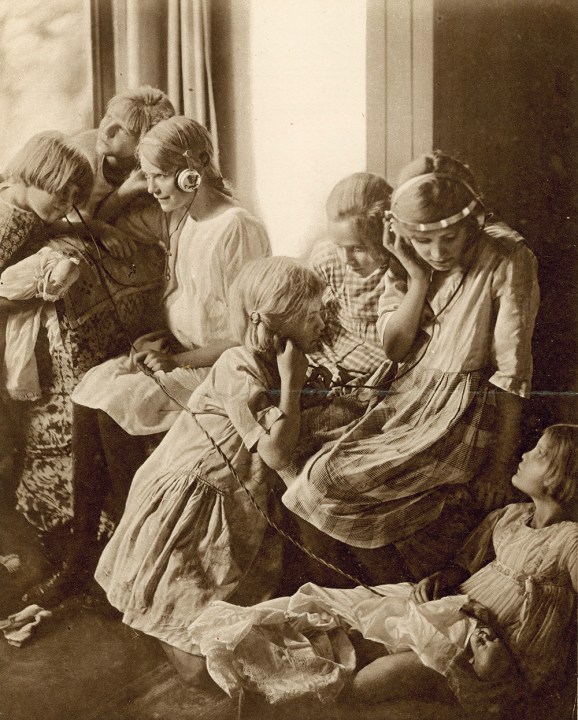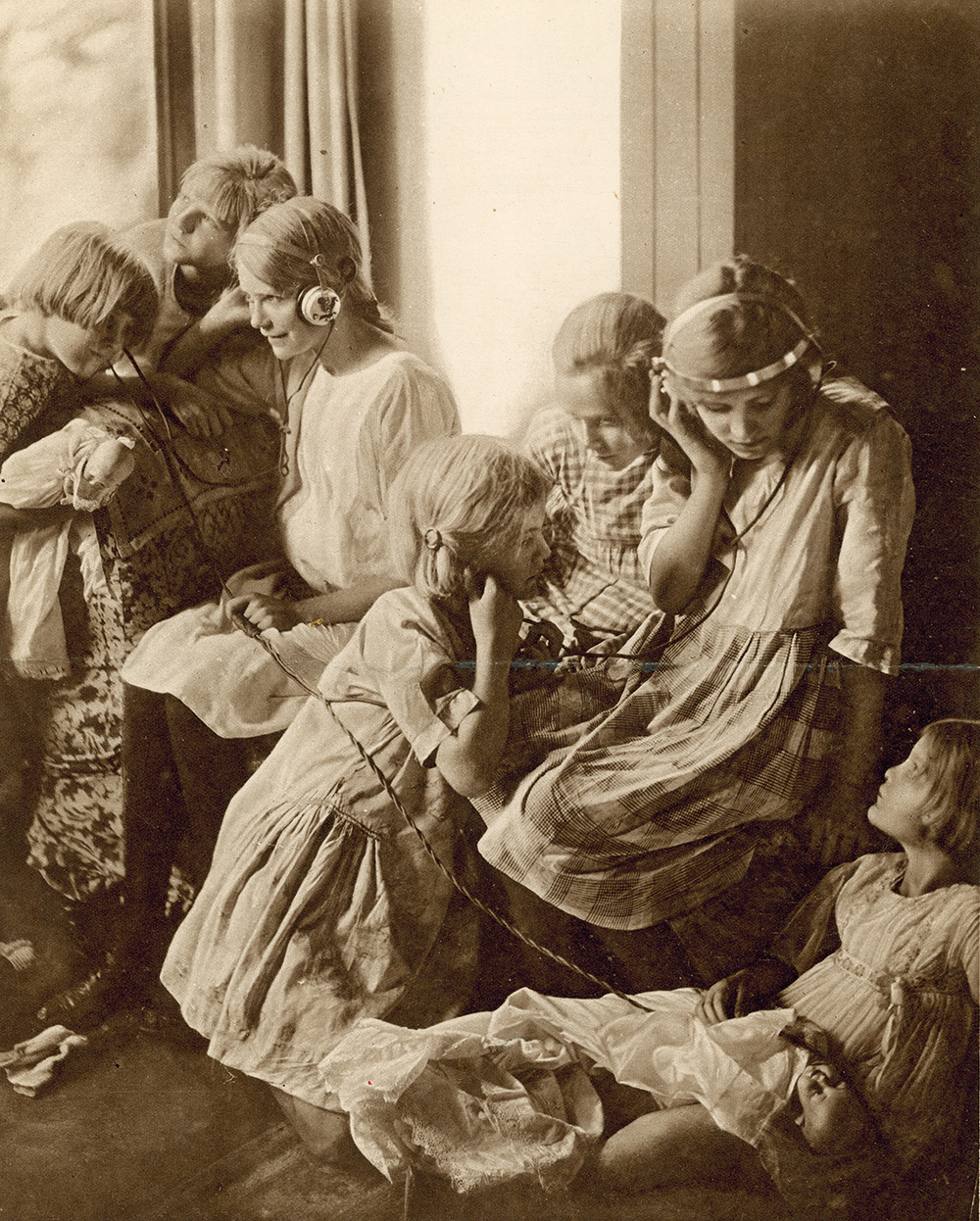
Ysenda Maxtone-Graham has narrated this article for you to listen to.
‘Is it necessary to have the window open when listening to the new device?’ asked Edith Davidson, the wife of the Archbishop of Canterbury, in 1923, referring to the latest fashionable contraption, the wireless. We might laugh – but it does take time for the older generation to catch up with new technology. To this day I instinctively roll down my car window (unnecessarily, I’m pretty sure) to point my phone towards the sensor that will grant me access to my local club.
In her joyous, richly illustrated book about the early years of radio from the listeners’ point of view, the BBC radio producer Beaty Rubens takes us inside the British home. The period covers wireless’s inception in 1896, with the exciting Electrophone (its advertisement showed ‘Pulpit – politics – drama – general news – opera’ all going into a Victorian housewife’s ear via headphones), to the mass audiences of 1939. By that time, loudspeakers had replaced headphones and listener numbers had grown from less than 150,000 in 1922 to 34 million.
For anyone curious about how British families lived in the first half of the 20th century, the book is full of gems. There’s a glorious photograph of a cantankerous old man, born in about 1850, with headphones clamped round his craggy head as he listens to bulletins about George V’s approaching death in 1936. The inherent comedy of the British being dragged into their own century is a rich vein.
The enchantment on the faces of a gaggle of girls listening to The Children’s Hour in 1923 is an antidote to the frowning Victorian. Radio was glamorous and exciting. Rubens’s parents had a cloth cover for their weekly Radio Times, hand-embroidered with a dainty image of a cottage at the end of a garden path. Such was the centrality to family life of the wireless and the Radio Times (trumpeted in its first editorial in 1923 as ‘the Bradshaw of broadcasting’), dictating how afternoons and evenings would be spent.
Not that, at first, a great many could listen. In the 1920s, a top-end wireless cost the annual salary of a male schoolteacher. And it needed an outside aerial. In Warrington, wires were strung along back alleyways, propped up with washing-line poles and brooms. But then, as the first Radio Times asked, ‘What are the Wild Waves Saying?’ Often listeners had no idea, because the noise that came out sounded like the pounding of the sea. It was hard to tell whether you were hearing a bassoon solo or, as one person put it, ‘an insurrection in Hell’. There was also the problem of ‘oscillation’ – a strange, high-pitched howling. Rubens tells us: ‘A single owner could cause oscillation to neighbours in a 30-mile radius simply by incorrectly tuning their own homemade device.’
In the 1920s, a top-end wireless cost the annual salary of a male schoolteacher
Yet through the crackle, if you were lucky, magic came. Imagine the moment when the British premiere of Gershwin’s ‘Rhapsody in Blue’ wafted into your parlour. In the course of her investigations, Rubens found a treasure trove in a 1936 survey of listener habits and reactions conducted in the Barton Hill area of Bristol by two women, Winifred Gill and Hilda Jennings. A Mrs Pugley said she’d attended her first concert because of what she’d heard on the wireless. It was the Berlin Philharmonic, and ‘newspaper boys were there, with bags of papers on their shoulders, in the cheapest seats’. Like her, those boys had been introduced to classical music through the wireless. The BBC founder Lord Reith’s philosophy was: ‘It is better to over-estimate the mentality of the public than to underestimate it.’
Did the wireless bring liberation or a new kind of tyranny to the British housewife? Single women and widows reported feeling less lonely, entertained by improving programmes of music, literature and talks. A Mrs Privett said: ‘I bring the potatoes to the table to peel, to listen to the services [the religious programmes broadcast daily]. I couldn’t hear them from the sink.’ Another was pleased to be taught how to pronounce words: ‘I notice how they say it on the radio, and I judge people accordingly.’
But husbands had a way of retaining control. Many demanded total silence. One wife said: ‘You couldn’t even peel the potatoes, because he used to say he could hear the droppings in the sink above what was coming through the headphones.’ A grocer, Mr James, said: ‘I’m gifted, if you can call it gifted, with a dominant personality, and wherever I am, if I want to listen, everyone has to be quiet.’ Of his news addiction, he declared: ‘I wouldn’t miss the news. I’ve even neglected the bacon machine for the news.’
There was a mismatch between how producers and presenters imagined the public lived and how they did live. ‘Nobody dines before eight,’ declared one manager, when the vast majority of the population had finished eating well before 7p.m. The BBC’s expectation was that by the evening children had been bathed and put to bed. In fact in working-class families it was more likely that the father had dropped off to sleep and at 10 p.m. his son would say: ‘Wake up, Dad. Time for the fight.’
It’s a Miss Vile’s summing up, from the 1936 Bristol survey, that I will treasure most. What wireless gives you, she said, ‘may not be substantial knowledge, but it beautifies your life’.







Comments